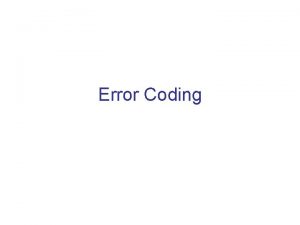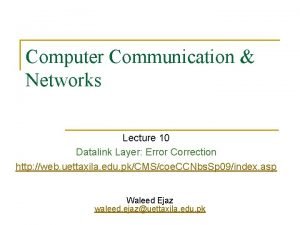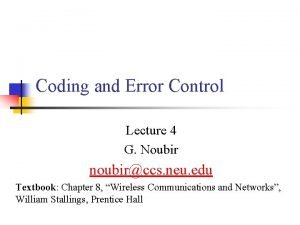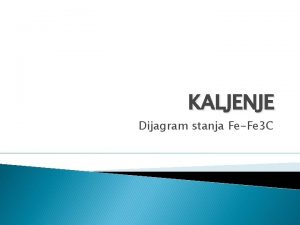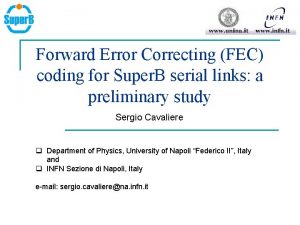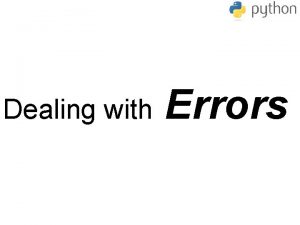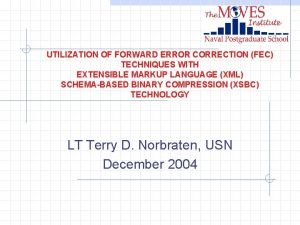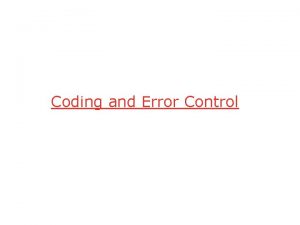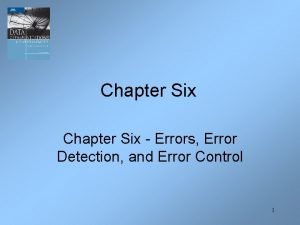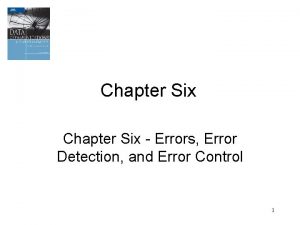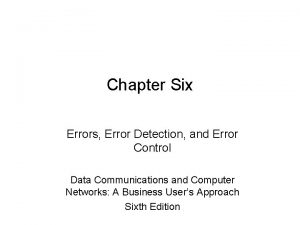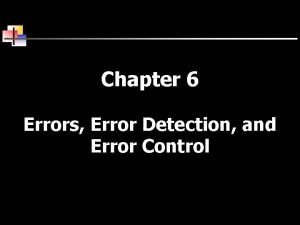Error Coding Forward Error Coding FEC control errors





![Hamming Encoder • The default code is [7, 4], which encode message of length Hamming Encoder • The default code is [7, 4], which encode message of length](https://slidetodoc.com/presentation_image_h2/50ad008091f10f6e89bdc583b8eb2b60/image-6.jpg)





- Slides: 11

Error Coding

Forward Error Coding • FEC control errors in data transmission, extend the range and reduces the power requirements for communication system. • Adding Redundancy. • No hand shaking required. • Data travels in one direction only. • Error rate is 2 , where m >= 3. m-1

• FEC is used in high-value communications system, such as cellular telephony, remote radio, spread spectrum communications, and satellite transmissions

Types of FEC • There are two types of FEC, namely Block Coding and Convolutional Coding • Block Coding encoder intersperses parity bits into the data sequence using a particular algebraic algorithm. • Convolutional codes process the incoming bits in streams rather than in blocks. It has powerful error correcting capabilities.

![Hamming Encoder The default code is 7 4 which encode message of length Hamming Encoder • The default code is [7, 4], which encode message of length](https://slidetodoc.com/presentation_image_h2/50ad008091f10f6e89bdc583b8eb2b60/image-6.jpg)
Hamming Encoder • The default code is [7, 4], which encode message of length 4 into codewords of length 7

Hamming Decoder • The Hamming decoder block decodes the data after it has been sent through the channel.

Error Detection Coding • Error detection is the ability to detect errors that are made due to noise or other impairments in the course of the transmission from transmitter to receiver. • Error detection coding is designed to permit the detection of errors. • A block code converts a fixed length of K data bits to a fixed length N codeword, where N > K.

• A low rate has a high detection probability, but a high redundancy. • Code Rate = Message length (K) / Codeword length(N) N= 2^M – 1, where M>=3 • A very common code is the single parity check code

To see how the addition of a parity bit can improve error performance, consider the following example. A common choice of K is eight. Suppose the BER is . Then: So, the probability of a transmission with an error is With the addition of a parity error bit we can detect any single bit error. So: As can be seen, the addition of a parity bit has reduced the uncorrected error rate by three orders of magnitude.

Types of Error detection • CRC Cyclic Redundancy Check Binary CRC’c are very effective for error detection but cannot correct error • LRC Longitudinal Redundancy Check
